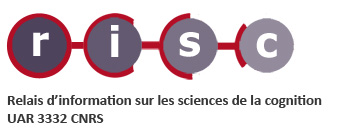Nicotinic modulation of dopaminergic activity in natural reward
Modulation nicotinique de l'activité dopaminergique et des comportements motivés
Résumé
Smoking affects one billion people worldwide, and is responsible for over 8 million preventable deaths a year, making it a major health concern. Nicotine, the main active compound in tobacco, acts on the nervous system by binding to nicotinic acetylcholine receptors (nAChRs). There is a wide diversity of nAChR subunits (��2 to 10 and β2 to 4) which assemble in different combinations to form pentameric receptors with different biophysical properties and localizations. Nicotine concomitantly produces rewarding and aversive effects, promoting and limiting nicotine consumption, respectively. While nAChRs are expressed in the reward system, notably the ventral tegmental area (VTA), they are also present in many other brain regions susceptible to nicotine-induced disruptions. The aim of my thesis work was to investigate the involvement of two non-canonical VTA-connected brain pathways in nicotine addiction: the pathways linking the interpeduncular nucleus (IPN) and the VTA, and the one connecting the VTA to the claustrum (CLA). I first studied the involvement of the IPN in nicotine reinforcement. We showed that IPN neurons respond heterogeneously to nicotine, and discovered that they are sensitive to low doses of nicotine that do not activate the VTA. Using new chemogenetic tools that I have developed, we have shown that β4-containing nAChRs of the IPN act as a brake on the response to nicotine in the VTA, thereby reducing the rewarding effects of the drug. The IPN would therefore contribute not only to aversion but also to nicotine reinforcement. Secondly, I studied how prolonged exposure to nicotine alters social interactions, and the potential involvement of the VTA-CLA pathway in these behavioral perturbations. We showed that chronic nicotine exposure increased the saliency of a novel social stimulus in a three-chamber task, resulting in an increased interaction time with novel conspecifics. Moreover, optogenetic activation of the VTA-CLA pathway induced a loss of preference for the novel social stimulus, while non-contingent optogenetic stimulation replicated the behavioral effects of prolonged nicotine exposure. Therefore, the VTA-CLA pathway seems to be involved in the saliency for new social stimuli, and this function may be disrupted by chronic nicotine exposure. Taken together, these studies highlight the importance of these two non-canonical pathways in nicotine addiction
Le tabagisme, qui concerne un milliard de personnes à travers le monde, est à l’origine de plus de 8 millions de décès évitables par an, et constitue ainsi un enjeu sanitaire majeur. La nicotine, principal composé actif du tabac, agit au niveau du système nerveux en se liant aux récepteurs nicotiniques de l’acétylcholine (nAChR). Cette liaison produit de manière concomitante des effets récompensants et aversifs, permettant respectivement de promouvoir et limiter la consommation de tabac. Les nAChR sont exprimés au niveau du système de la récompense, notamment l’aire tegmentale ventrale (VTA), mais également dans de nombreuses autres régions cérébrales perturbées par la nicotine. L’objectif de mes travaux de thèse a été d’étudier l’effet de la nicotine sur deux voies cérébrales centrées sur la VTA et non canoniques : la voie reliant noyau interpédonculaire (IPN) et la VTA d’une part, et la voie projetant de la VTA vers le claustrum (CLA) d’autre part. J’ai dans un premier temps étudié l’implication de l’IPN dans le renforcement à la nicotine. Nous avons montré que les neurones de l’IPN répondent de manière hétérogène à la nicotine, et découvert qu’ils sont sensibles à de faibles doses de nicotine qui n’activent pas la VTA. A l’aide de nouveaux outils chémogénétiques que j’ai développés, nous avons mis en évidence que les nAChR contenant β4 de l’IPN jouent un rôle de frein sur la réponse à la nicotine dans la VTA, et diminuent ainsi l’effet récompensant de la drogue. L’IPN ne jouerait donc pas uniquement un rôle dans l’aversion mais également dans le renforcement à la nicotine. Dans un second temps, j’ai étudié comment une exposition prolongée à la nicotine modifie les interactions sociales, et comment la voie VTA-CLA pourrait participer à ces perturbations comportementales. Nous avons observé qu’une exposition chronique à la nicotine produit une augmentation de la saillance d’un stimulus social nouveau dans une tâche trois-chambres, se traduisant par une augmentation du temps passé avec le nouveau congénère. De plus, l’activation optogénétique de la voie VTA-CLA induit une perte de la préférence pour le stimulus social nouveau dans la tâche trois-chambre, tandis que la stimulation optogénétique non contingente reproduit les effets comportementaux d’une exposition prolongée à la nicotine. La voie VTA-CLA semble donc impliquée dans la saillance pour de nouveaux stimuli sociaux, et cette fonction serait perturbée par la nicotine chronique. L’ensemble de ces travaux permet de mettre en évidence l’importance de ces deux nouvelles voies non canoniques dans l’addiction à la nicotine.
| Origine | Version validée par le jury (STAR) |
|---|
